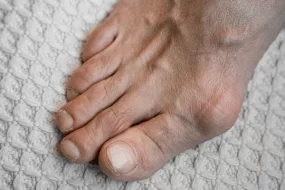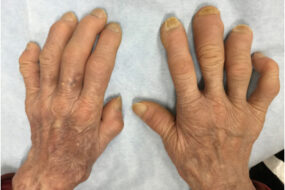Non-Immune Hemolytic Anemia
- Endothelial damage
- Thermal injury – Red blood cells suffer thermal damage from severe burns, seen in the blood as fragmented red blood cells and microspherocytes.
- Shear stress damage occurs in mechanical heart valves due to high flow via defective valves or periprosthetic leaks through the suture ring, keeping a valve in place.
- Microangiopathic hemolytic anemia – Capillary fibrin deposition can significantly impair red blood cells.
- Infection
- Clostridium perfringens sepsis, typically in ascending cholangitis or necrotizing fasciitis, may induce severe intravascular hemolysis with significant spherocytosis.
- Intravascular hemolysis may be due to Plasmodium falciparum malaria.
- Toxins or medications













